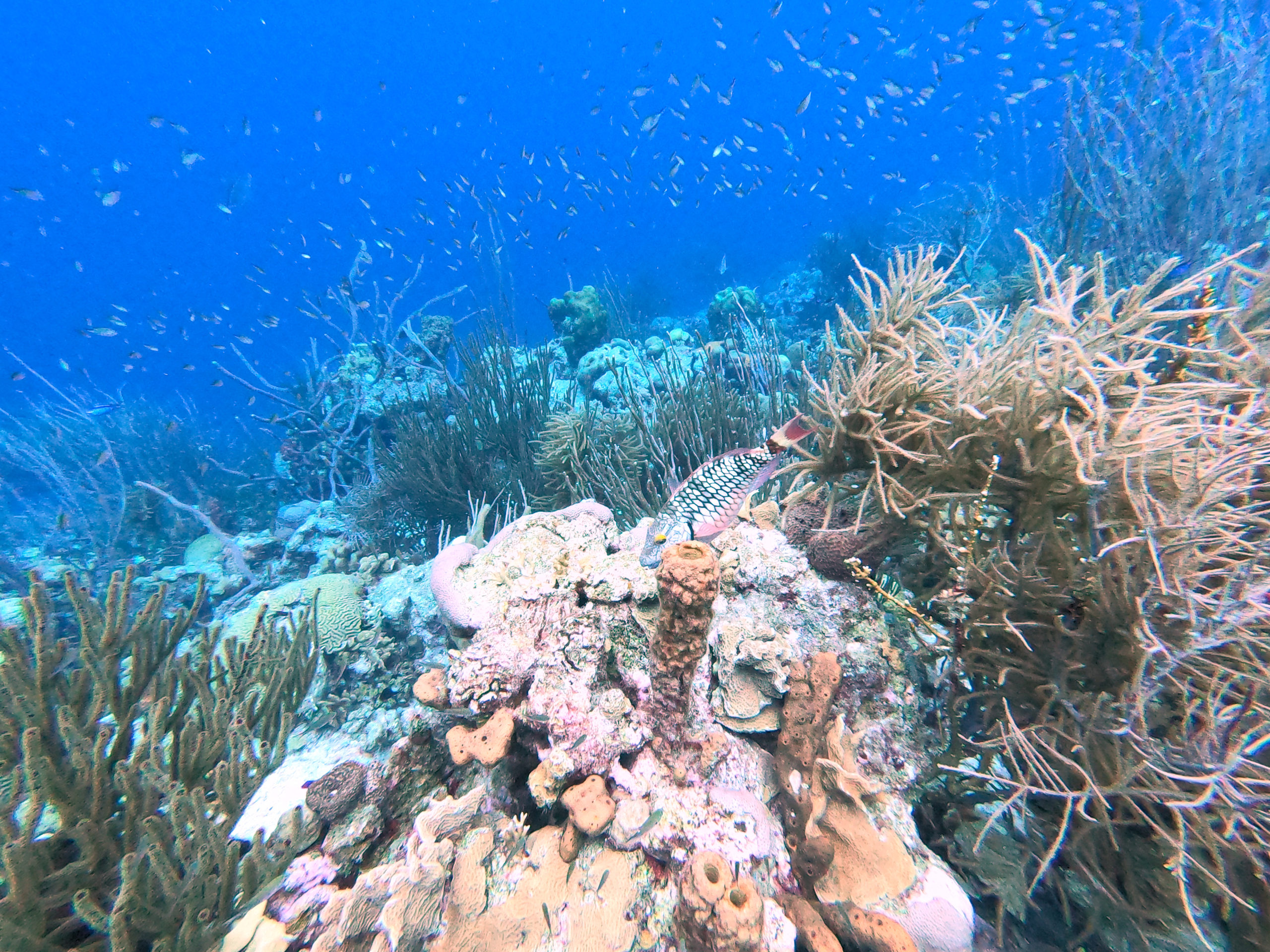The dive sites in Bonaire are marked with little painted rocks, yellow with the name of the site in black. This quickly gets deeply etched into the diver’s mind, so businesses catering to divers often also mark their entrances with a painted rock. “Dive shop”. “Beach bar”. Or in this case, Margate Bay.

This was another of our favorite sites, with healthy and varied coral, and big schools of big fish. Margate is further south than the double-reef sites, so it’s all one continuous, gently sloping reef, with softer corals near shore transitioning to mostly hard corals and sponges below.




Strangely, despite the name, we didn’t see a single black margate on this dive. Which is unusual, because they’re quite common here, and we usually see a couple of them everywhere we go. But we saw tons of other fish, like this big schoolmaster snapper, and these black jacks.



Bar jacks (left) are common here, and they’re really fun, because they seem to have no fear of divers, so they zip around checking you out and maybe using you as camouflage. Schools of horse-eye jacks, right, are a little more leery but not in a super big hurry to get out of your way either.



And of course, everywhere you go, there are always tons of chromis.

As you get deeper, soft coral gets more sparse, so the occasional huge gorgonian feels special. But the hard corals can be cool looking as well. The second brain coral here is actually dead in the middle, so it’s a bit of a sad picture, but the colors are still neat.



The sponges can get really big, especially the orange elephant ears. Sponges often seem to house residents, like these two “hiding” graysbys (right), or this very territorial damselfish.



It’s just a fun place to explore.


And there are critters in the shallower bits as well. Here’s a surgeonfish and a slender filefish.


Parrotfish are abundant, but they’re still a favorite because they’re so colorful. Here’s a stoplight parrotfish on the left, and a princess on the right.


And, of course, the increasingly common Andrewfish. Plus a blue tang (the blue one) and a scrawled filefish for good measure.





